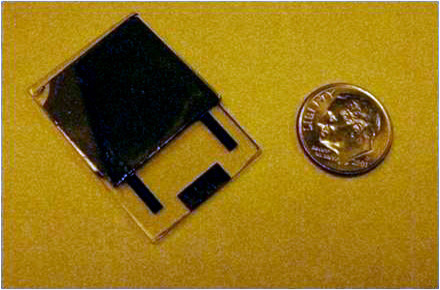Researchers from the University of Missouri have developed a nuclear energy source that is small, lightweight, safer and more efficient and designed for portable devices

Batteries are able to power almost everything - from tiny sensors to large systems. While scientists are finding ways to make them smaller and more powerful, problems can arise when these batteries are much larger and heavier than the device itself.
"In order to supply enough power, we need certain methods that have a high energy capacity," said Jae Kwon, a professor of electrical and computer engineering at the University of Missouri. "A radioisotope battery can provide an energy capacity that is six orders of magnitude higher than conventional chemical batteries."
The scientist and his research team are working on preparing a small nuclear battery, currently the size and thickness of a coin, which will operate several micro- and nano-electromechanical systems. Despite the fact that the use of nuclear batteries raises concern among the general public, the researcher claims that they are completely safe.
"People hear the word "nuclear" and immediately think of something very dangerous," he notes. "However, nuclear energy sources are already used safely today to operate a variety of devices, such as pacemakers, satellites in space and underwater systems." The innovation in the researchers' invention is not only in the small size of the battery, but also in the fact that it is a semiconductor - the new battery uses a semiconductor that is a liquid and not a solid.
"The challenging part of using a radioactive battery lies in the fact that when you use the energy, some of the radiation energy may damage the crystalline structure of a solid semiconductor," explains the researcher. "By using a liquid semiconductor we believe that the impact of this problem can be reduced."
In the future, the researchers hope to increase the battery's power, reduce its size and operate it with a variety of other materials. The researcher believes that the battery could be thinner than a human hair. A patent has already been requested for this invention, and the research findings were published in the Journal of Applied Physics Letters and the Journal of Radioanalytical and Nuclear Chemistry.

10 תגובות
All this is still not close to cold fusion. It's really great for pacemakers because the product is indeed small. but !! It is important that the same nuclear battery. It has an end and it will also end up in the garbage bin .. A genius development but another product of a year or two until the cold fusion is realized until then it's very nice to hear about such nonsense 🙂
Six orders of magnitude means an energy capacity a million times greater than that of a normal battery. It seems that the requested applications are far beyond improving the performance of portable computers, etc. What about driving cars? and planes? How can the ecological damage of using batteries be compared with the use of chemical fuel?
"A radioisotope battery can provide an energy capacity that is six orders of magnitude higher than conventional chemical batteries."
Six orders of magnitude? what? Where do you buy one for a laptop? Finally leaving the cable at home without splitters and people bumping into each other.
I didn't understand, is this another claim for cold fusion?
Suddenly the concept of half-life takes on a more tangible meaning...
I just don't understand how they will lower their price. In the meantime, apparently Iran has already realized that oil is no longer current...
Let's just hope Gill's prediction doesn't come true by the battery shortening the buyer's life.
Ahmadinejad at the Ace store for the cashier:
Please give me two plutonium batteries, no, not those big fat ones.
Question: What is the voltage of the described battery?
It doesn't seem to me that the manufacturers of the devices are interested in the fact that there was an excellent Nokia 3110 Domani device (this blue one) that almost didn't break down and yet they stopped producing it to make way for new generations.
Advertisement for a 12th generation cell phone:
"You can talk and surf until you die without charging,
The device will last longer"
😀
If you want to reassure, you should note that the source of solar energy is nuclear (although it is fusion)